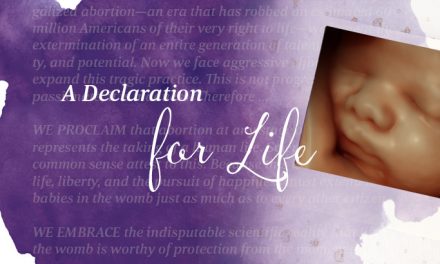Earlier this week, the California Assembly’s Committee on Higher Education passed Bill 24, which would require all public colleges and universities in the state to provide the abortion pill on campus. Although there are still some political hurdles, the bill must pass a final vote and be signed into law by Gov. Gavin Newsom to become effective. Abortion activists and liberal politicians are ecstatic, but college and university presidents should be gravely concerned.
The abortion pill isn’t as safe as politicians and community leaders have been led to believe.
A similar bill previously passed when former Gov. Jerry Brown was in office, but he refused to sign the measure. His reasoning, sadly, was that it was unnecessary since most college campuses within five to seven miles of an abortion clinic. But he likely had another reason as well. University and college presidents would be the ones to implement this measure, and even the most liberal presidents have expressed some concern with the medical liability of offering such a dangerous drug on campus.
Planned Parenthood and other pro-abortion groups have been incredibly successful at minimizing the risks that women take when they decide to have a chemical abortion. In an article, former Planned Parenthood president Cecile Richards even said that the abortion pill is safer than Tylenol (it isn’t). Her statement was ridiculous and dangerous. Yes, abusing Tylenol can result in death, but just taking one abortion pill can result in life-threatening complications.
The abortion pill(s) process involves taking two different drugs. The first drug (mifepristone) is usually given to the woman during her visit to the abortion clinic under the watchful eye of the abortionist. This drug works by fatally depriving the preborn baby of the essential nutrient progesterone. Misoprostol is the second drug, which is taken between 24-48 hours after the mifepristone and is designed to induce uterine contractions that results in an unnatural miscarriage.
The process isn’t simple, easy or entirely safe.
When women begin the abortion pill process, it can last several days or weeks. The usual reactions to the drugs are pain, anywhere from moderate to severe, and bleeding that can last for weeks. Other common problems include nausea, vomiting, diarrhea, chills and fever. About one in five women contact their abortionist over concerns about these common reactions, which are more severe the later a woman is in her pregnancy.
That sounds exactly like the reactions that most people can expect from taking one dose of Tylenol, right Cecile?
Although those are the common side effects, serious abortion pill complications can include hemorrhaging, infection/sepsis, undiagnosed ectopic pregnancy (a potentially fatal complication), incomplete abortion, uterus rupture and death. All of these could potentially result in hospitalization or, in the case on an incomplete abortion, an additional surgical abortion.
It is completely understandable why no college or university administration would want this drug available on campus. Imagine the aftermath of a chemical abortion in college housing? As depicted in the Abby Johnson film, Unplanned, a chemical abortion can be a bloody affair. It would also mean that university and college campuses would have to staff a 24-hour nurse line for women who are experiencing concerning side effects.
Signing Bill 24 into law makes no sense and puts women at risk on college campuses across the country. In fact, one of the first chemical abortion deaths in the country was an 18-year-old woman in California who was told that the process was safe. It wasn’t and she lost her life. If the abortion pill is introduced onto campuses, it is likely that colleges and universities will have young women experiencing a variety of problems.
Hopefully, the words of college and university presidents might once again sway the governor to veto the bill if passed. Drugs like mifepristone and misoprostol have no place on college campuses, and, as former Gov. Brown noted without remorse, most abortion clinics are just a couple minutes away. The state of California should be focused more on funding education programs, instead of aborting its future citizens.






